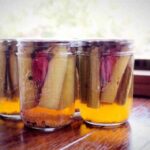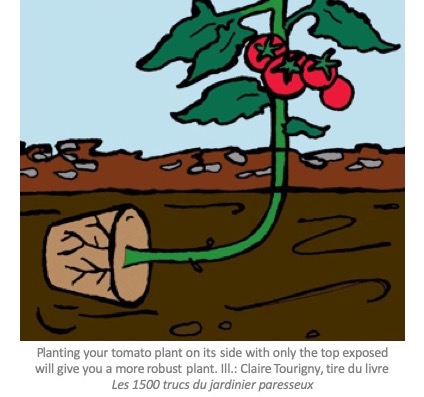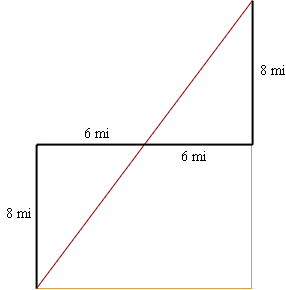Radishes are a staple in many gardens and their crisp, spicy roots a favorite in salads and dishes. Yet, there’s more to these plants than the red bulbs that peek out of the soil. In an exciting twist for gardeners and food enthusiasts, it turns out you can eat the seed pods on your radish plants. This revelation not only adds another edible element to this already versatile plant, but it also represents a step towards sustainable gardening by utilizing every part of the plant.
After the typical radish harvest, the plants can indeed surprise you. Left to grow, they shoot up tall vines adorned with white blossoms and eventually develop green, edible pods. These pods encapsulate the seeds of the plant but are not merely for planting next season’s crop; they are a delicious and nutritious addition to your diet. So, here’s how you can maximize your radish yield with seed pods and turn your garden into a no-waste zone.
What are radish seed pods?
Radish seed pods are the fruit of the radish plant that appear after the plant has flowered and gone to seed. These elongated pods house the seeds that can be used for planting the following season. However, before they mature and harden, these green pods are tender and edible seed pods packed with flavor.
Typically, the pods are slender, with a crisp texture and can range in taste from mildly peppery to quite spicy, depending on the radish varieties. They are not only a testament to the plant’s life cycle but also a reflection of resourceful gardening.
The pods are an excellent example of sustainable gardening, as they allow you to extend the harvest period and reduce food waste by enjoying parts of the plant that might otherwise be discarded.
Can you eat radish seed pods?
Absolutely! Radish seed pods are not only edible but also highly nutritious. They can be a delightful addition to your culinary repertoire, offering a unique taste and crunch. Whether you’re a seasoned gardener or a curious foodie, exploring the flavors of these pods is a venture worth taking.
Their edibility might come as a surprise to many, as the focus often lies on the radish root. However, radish plants are giving us more than one way to enjoy their bounty.
Raw or cooked, these pods are versatile in use. They’re rich in vitamins and can provide a spicy kick to salads, sandwiches, or even as a standalone snack. The green pods are a testament to the plant’s versatility and the potential of our gardens.
How to harvest radish seed pods?
Harvesting radish seed pods is simple and similar to collecting any other vegetable from your garden. The key is to harvest them when they are young and tender, which is usually a few weeks after the radish plants have gone past their prime for root harvesting.
Look for pods that are still green and crisp. They should easily snap off the plant, and you can pluck them by hand. It’s important not to wait too long, as the pods can become tough and fibrous.
Once harvested, you can store them in the refrigerator just like any other fresh vegetable. Eating them soon after picking ensures you get to enjoy their peak flavor and texture.
What do radish seed pods taste like?
The taste of radish seed pods can be quite a pleasant surprise. They often have a flavor profile similar to the radish itself, albeit milder. They can range from mild to spicy, with a crisp texture that adds a refreshing bite to any dish.
Some describe the taste as a combination of a radish and a snap pea, slightly peppery with a hint of sweetness. The flavor can vary based on the type of radish plant and the stage at which the pod is harvested. Generally, younger pods are milder and juicier, while older pods can develop a spicier kick.
What’s exciting is that this taste test can vary from garden to garden, offering a unique experience to anyone growing different types of radishes.
What can you do with radish seed pods?
Radish seed pods are a creative way to use radish seed pods in the kitchen. They are incredibly versatile and can be incorporated into a variety of dishes to add flavor and crunch.
- Add them raw to salads for a spicy crunch.
- Use them as a garnish for soups and stews.
- Stir-fry them with other vegetables for a quick and healthy side dish.
- Pickle them for a tangy treat (more on this below).
- Blend them into green smoothies for an extra kick of spice and nutrition.
These are just a few ways to enjoy these crunchy pods. The possibilities are endless, and they present an opportunity to get creative in the kitchen while maximizing your radish yield with seed pods.
How to pickle radish seed pods?
Pickling radish seed pods is an excellent way to preserve their flavor and extend their shelf life. This method is easy, and you can enjoy the pickled pods as a condiment or snack for months. Here’s a simple way to pickle these gems:
- Clean the pods and trim any stems.
- Prepare a brine with equal parts water and vinegar, adding spices and salt to taste.
- Place the pods in a sterilized jar and pour the hot brine over them, ensuring they are fully submerged.
- Seal the jar and let it cool before refrigerating.
After a week or so, the pods will be ready to eat, though you might find their flavor continues to develop over time. Pickling not only adds a tangy flavor but also makes these pods a convenient snack you can store for an extended period.
Related Questions on Eating Radish Seed Pods
Can radish seed pods be eaten?
Yes, radish seed pods are edible and can be a tasty and nutritious addition to your diet. They can be consumed raw, cooked, or pickled, offering a range of culinary uses.
Ripe for the picking shortly after the traditional radish root harvest, these pods are a delicious way to practice sustainable gardening by using every part of the plant.
What can I do with radish pods?
There are several ways to enjoy radish pods in your meals. They lend themselves well to raw applications in salads or as a crunchy topping for dishes. Cooking them is also an option; they can add flavor and texture to stir-fries and other recipes. Pickling is a popular method for preserving their unique taste.
Which part of radish is not edible?
While most parts of a radish plant are edible, including the roots, leaves, flowers, and seed pods, the woody stems and the very mature seed pods, which can become hard and fibrous, are generally not considered edible.
Are radish seeds good for you?
Radish seeds, encased in the edible pods, are indeed nutritious. They contain valuable nutrients and can be sprouted to be eaten as radish sprouts, which are also highly beneficial to your health.
As we explore the wonders of radish seed pods, check out this insightful video on how to enjoy radish seed pods in recipes:
In summary, don’t overlook the seed pods on your radish plants. They are a delightful addition to your diet and represent a step towards a more sustainable and resourceful way of gardening. Whether you choose to eat them raw, cook them, or pickle them, radish seed pods are sure to add an exciting and flavorful element to your culinary creations.





